Have We Forgotten About The Rohingya’s?
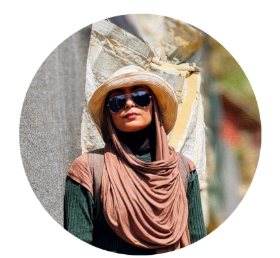 I was recently in Cox’s Bazar, Bangladesh for over a month, data collecting for one of my PhD studies (with Health Care Practitioners) and volunteering with Blackstone Charity. In this article I will be highlighting the plight of one of the most persecuted communities in the world; the Rohingya refugees.
I was recently in Cox’s Bazar, Bangladesh for over a month, data collecting for one of my PhD studies (with Health Care Practitioners) and volunteering with Blackstone Charity. In this article I will be highlighting the plight of one of the most persecuted communities in the world; the Rohingya refugees.
In recent years, there has been very little to no coverage of the Rohingya people residing in the camps of Bangladesh.
Is this because the Rohingya’s have safely returned to Myanmar? Or maybe they have stopped fleeing to Bangladesh? Or is it possible that their situation has improved?
Before we dive into these questions and other vital ones, come and join me as we go back to the basics; who are the Rohingya people?
For centuries the Rohingya people, who are a group of Muslim ethnic minorities have lived in Myanmar (Rakhine state). Despite living in Myanmar (formerly known as Burma) for many generations, since 1982 they have been denied citizenship, and are not officially recognised as an ethnic group in their home country. As a result, they are the world’s largest stateless population (USA For UNHCR The UN Refugee Agency, 2022). Being stateless means they are not recognised as citizens or as nationals in any country and therefore can not benefit from any rights linked with citizenship, such as legal, educational, healthcare rights and other form of basic rights that is given to nationals of a country (USA for UNCHR The UN Refugee Agency, 2023).
According to Mahmood et al., (2017), the Rohingyas’ citizenship was stripped off them in 1982 as they were not able to meet requirements to prove their forefathers were settled in Burma before 1983 (Mahmood et al., 2017). Ullah (2011), further suggests a census that was conducted by Myanmar (Burma) in 1977 resulted in the state-sponsored persecution, oppression and forced migration of Rohingya refugees. Where 200,000 Rohingyas were forced to flee from Myanmar to Bangladesh in 1978, and further 300,000 fled persecutions between December 1992 to March 1992 (Ullah, 2011).
In 2017, the Rohingya communities experienced serious levels of violence and terror from the Myanmar state security force, which forcefully displaced more than 700,000 people into Bangladesh (MSF, 2022). During that displacement MSF (2022) recorded more than 6,700 deaths.
Now that we have explored some basics about the Rohingya population and who they are, we can start answering some of our initial questions, starting with have the Rohingya’s safely returned to Myanmar?
Whilst we address these questions, it is very important to remember the complexity of this topic, and we should never look at it from a simplistic view, rather we should be open to learning from human rights group, those who work with Rohingya’s on the ground and most importantly facilitate for the Rohingya’s to tell their own narratives.
So, have the Rohingya’s safely returned to Myanmar?
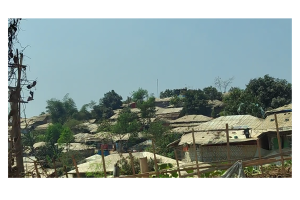
No, according to Human Rights Watch (2023), over 730,000 refugees’ that were forced to flee Myanmar in 2017, are still living in various camps in Bangladesh. Further, 600,000 that remain in Myanmar live in an apartheid system used by the local authorities (Human Rights Watch, 2023). In current time there are over 1.5 million Rohingya refugees residing in Bangladesh (UNCHR, 2025).
Picture A: Very crowded tents, and the largest refugee camp in the world is divided between mini camps
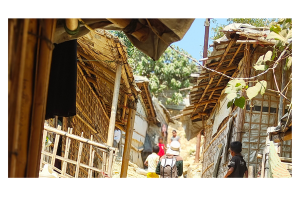
Picture B: The tents are hot in the summer and cold in the winter, sometimes bamboo bridges are used to connect various mini camps together
What about the continuous forced displacement; have [they] stopped fleeing to Bangladesh?
Rohingya refugees continue to seek safety in Bangladesh. For example, between 2022- 2023, over 15,500 Rohingya refugees attempted to cross over to Bangladesh of which 569 were reported as dead or missing (UNCHR, 2023). This means the Rohingya refugees have not stopped fleeing to Bangladesh.
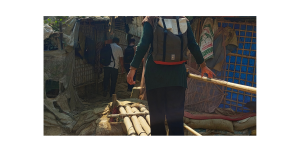
Picture C: Walking through a bamboo bridge to get to various sides of the camps
Now, let’s get to our final question; their situation has improved?
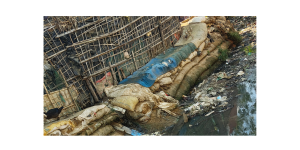
Picture D: A stream of polluted water under the bridge, right next the tents
Those that remain in Myanmar, are continuously going through persecution, and are facing an apartheid system. Although Bangladesh is currently hosting more than 1.5 million Rohingya refugees [the largest refugee camp in the world], the Rohingya’s are not given the same rights as the citizens, therefore they can not work, or enjoy any other rights that are given to its nationals. So, to answer this question there is still a lack in basic needs that exists for those who are residing in the camps!
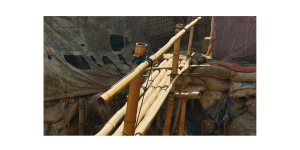
Picture E: Some tents made of self-built bamboo and tarpaulin shelters*
Just to summarise, we can see the Rohingya refugees’ have not returned safely to Myanmar, are still fleeing to Bangladesh for safety and their situation has not improved– then why has there been little to no coverage of the largest stateless refugee population of the world?
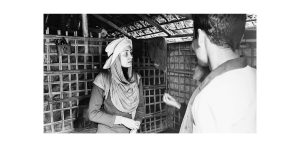
Picture F: Rohingya family invited me to their home and spoke about their living conditions*
I would like to leave you with a few reflection points- As international communities, what can we do to bring the Rohingya refugees’ stories forward? And most importantly have we truly forgotten about the Rohingya people?
*Consents were taken for photographs from individuals/caregivers, they were also informed where and how the pictures will be used
Author
Sadia Lira
Blackstone Charity Volunteer
PhD researcher; exploring ways to improve refugees’ mental health in Calais/Dunkirk, France & Cox’s Bazar, Bangladesh
Reference
Human Rights Watch. (2023, August 20). Future Bleak for Rohingya in Bangladesh, Myanmar. Human Rights Watch. https://www.hrw.org/news/2023/08/20/future-bleak-rohingya-bangladesh-myanmar
Mahmood, S. S., Wroe, E., Fuller, A., & Leaning, J. (2017). The Rohingya people of Myanmar: health, human rights, and identity. The Lancet, 389(10081), 1841–1850. https://doi.org/10.1016/s0140-6736(16)00646-2
MSF. (2022). A timeline of the Rohingya crisis. Doctors without Borders – USA. https://www.doctorswithoutborders.org/latest/timeline-rohingya-crisis
Ullah, A. A. (2011). Rohingya Refugees to Bangladesh: Historical Exclusions and Contemporary Marginalization. Journal of Immigrant & Refugee Studies, 9(2), 139–161. https://doi.org/10.1080/15562948.2011.567149
UNCHR. (2023). Bangladesh: Rohingya Refugees Fleeing over Land and Sea. Global Focus. https://reporting.unhcr.org/bangladesh-rohingya-refugees-fleeing-over-land-and-sea
UNCHR. (2023). Bangladesh: Rohingya Refugees Fleeing over Land and Sea. Global Focus. https://reporting.unhcr.org/bangladesh-rohingya-refugees-fleeing-over-land-and-sea
USA for UNCHR The UN Refugee Agency. (2023). Statelessness Explained. Unrefugees.org. https://www.unrefugees.org/news/statelessness-explained/#Whataretheconsequencesofstatelessness?
USA For UNHCR The UN Refugee Agency. (2022). Rohingya Refugee Crisis Explained. www.unrefugees.org. https://www.unrefugees.org/news/rohingya-refugee-crisis-explained/#Rohingya

